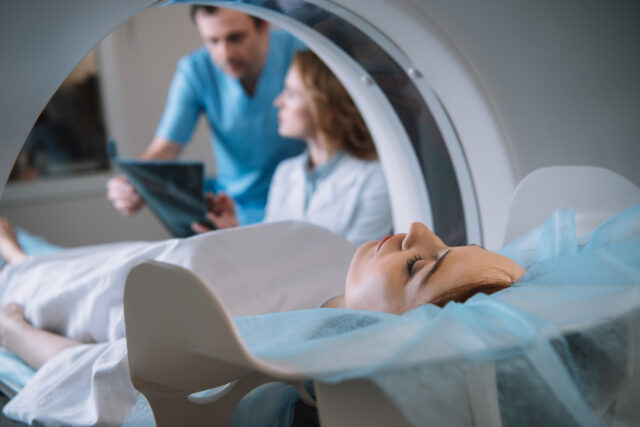While Magnetic Resonance Imaging (MRI) machines have been a staple in medical imaging for years, their application in dentistry is relatively new. The University of Minnesota School of Dentistry has recently pioneered this field with the opening of their Orofacial MRI Center. The introduction of MRI technology to dentistry marks a significant leap forward in patient care and diagnostic capabilities.
MRI Diagnostics in Dentistry
Dr. Laurence Gaalaas, a key figure in this groundbreaking development and leader of The University of Minnesota School of Dentistry Orofacial MRI Center, highlights the potential of MRI in dentistry in an interview with Becker’s Dental, emphasizing the technology’s ability to image both hard and soft tissues and provide a more comprehensive understanding of dental conditions. This could be particularly beneficial for conditions like endodontic disease, orthodontics, and temporomandibular joint disorders.
One of the most significant advantages of MRI is its ability to image soft tissues without the use of ionizing radiation. Instead, MRI uses radio waves and a strong magnetic field to create images of the body’s internal structures. This is a stark contrast to traditional X-ray-based imaging techniques, which can have potential risks, especially for young patients or those undergoing frequent scans. MRI offers a safer and more detailed view of the oral cavity, allowing for more accurate diagnoses and treatment plans.
MRI Use in Dental Patient Care
Beyond its diagnostic capabilities, MRI also holds promise for treatment planning and monitoring. By providing detailed images of dental structures and surrounding tissues, MRI can help dentists visualize complex procedures and assess the effectiveness of treatment. This can lead to more precise and efficient treatment planning, reducing the need for multiple appointments or unnecessary procedures.
MRI can also be used to monitor the progress of dental treatments over time. By comparing images taken before and after treatment, dentists can assess the healing process and identify any potential complications. This can help ensure that patients receive the optimal care and minimize the risk of adverse outcomes.
Challenges With MRI Use in Dentistry
While MRI technology holds immense promise, there are still challenges to overcome before it becomes widely adopted in dental practices. The size and cost of MRI machines can be prohibitive for many dental offices, though costs have decreased over time. Additionally, training dental professionals to use this new and complex technology and ensuring patient safety are crucial considerations.
However, the potential benefits of MRI in dentistry are undeniable. By providing more accurate diagnoses, enabling earlier intervention, and improving treatment planning and monitoring, MRI can significantly enhance patient outcomes. As technology continues to advance and costs decrease, it is likely that MRI will become a more integral part of dental care.
Additional Considerations:
- Integration with Other Technologies: MRI can be combined with other imaging modalities, such as cone beam computed tomography (CBCT), to provide a more comprehensive view of dental structures and surrounding tissues.
- Research and Development: Ongoing research is essential to further explore the applications of MRI in dentistry and address potential challenges.
- Patient Acceptance: Educating patients about the benefits and safety of MRI is crucial for its widespread adoption.
- Cost-Effectiveness: As technology advances and costs decrease, MRI may become more cost-effective for dental practices.
The introduction of MRI to dentistry represents a paradigm shift in imaging technology. By offering a safer and more comprehensive view of the oral cavity, MRI has the potential to revolutionize diagnosis, treatment planning, and monitoring for oral health care.
SOURCES: John Hopkins Medicine, Becker’s Dental, The University of Minnesota School of Dentistry





